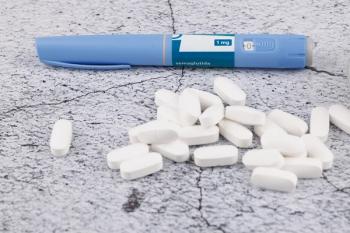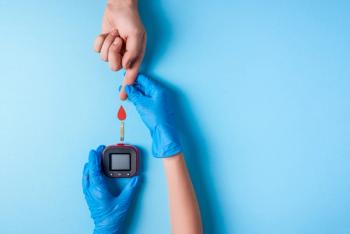
- Drug Topics May 2019
- Volume 163
- Issue 5
Cost Challenges Are Ongoing with Diabetes Drugs
How pipeline promises-and disappointments-are impacting patients with diabetes.
According to the
Over the last 20 years, the number of adults with diabetes has more than tripled, and the total direct and indirect estimated cost of diagnosed diabetes in the United States in 2012 was $245 billion.
“Diabetes is the highest traditional overall drug spend category for commercial, Medicare D, and Medicaid clients; and among all drug categories, only autoimmune has a higher drug spend,” says April Kunze, PharmD, senior director for clinical formulary development and trend management strategy,
“Given the prevalence and the opportunities where diabetes care can go wrong, it can be an ideal area connected to outcomes-based contracts,” explains Mark Ginestro, a principal from
Pipeline Promises
“With an aging population, the prevalence of diabetes and the number of medications to treat the disease are anticipated to grow,” Kunze says. “There have been many new therapies introduced to the market in the past few years, which has caused a rise in the use of branded medications in combination or as a replacement to older lower-cost generic drugs.”
Trending:
While there are some exciting promises in the pipeline, recent activity has cast doubts on that pipeline’s future. The FDA recently denied approval for the investigational drug Zynquista (sotagliflozin,
Zynquista works by inhibiting both sodium-glucose cotransporter 2 (SGLT2), a transporter responsible for most of the glucose reabsorption performed by the kidney, and sodium-glucose cotransporter 1 (SGLT1), a transporter responsible for glucose and galactose absorption in the gastrointestinal tract.
The agency issued a Complete Response Letter (CRL) in March, following an eight to eight vote by the FDA’s advisory committee in January in favor of the drug’s benefits outweighing its risks.
“Given the advisory committee’s vote it is not entirely surprising that the FDA has issued a CRL for the Zynquista New Drug Application,” Kunze says. “Other SGLT2 inhibitors are being studied for use in type 1 diabetes. Currently, SGLT2 inhibitors are approved for the treatment of type 2 diabetes.”
Farxiga (dapagliflozin,
Manufacturers of SGLT2 inhibitors are also studying overall health outcomes, such as major cardiac events and sub-populations within diabetic patients, including those with chronic kidney disease or heart failure, to show potential benefit and expand labeled indications, according to Kunze.
Technology and Diabetes
Technology also has an important role to play, with wearable devices, such as continuous glucose monitors (CGMs) that aid in the diagnosis, treatment, and self-management of diabetes. Ginestro also says that medical device makers have introduced different variations of an artificial pancreas, an automated insulin pump with a CGM for management of patients with type 1 diabetes.
As far as additional technology innovations beyond the artificial pancreas, more digital tools are being introduced that will help with the diagnosis, management, and treatment of diabetes.
“That can come from patient education materials being tied to smartphones, which can help in preventive care for prediabetes or helping patients manage the condition,” says Ginestro. “Another opportunity is tied to using tech to connect the doctor or patient to warn of elevated A1C levels or blood sugar readings to engage a patient to prevent a trip to the emergency room. The use of predictive analytics can also be applied to stratify patients by risk so the ones most vulnerable to repeat hospitalizations can get the help they need.”
Proactive Management
With remote patient monitoring now being reimbursed by CMS, Ginestro expects more players to emerge in proactive health management.
Read More:
“We expect to see more type 2 diabetes patients opting for use of CGMs and other monitoring devices,” says Ginestro. “We can even foresee the broader consumer community using CGMs when they may be deemed prediabetic or even for those who are simply health-conscious consumers.”
Future of diabetes
The demographic of tens of millions of prediabetics and the obesity epidemic mean there will be no shortage of patients, according to Ginestro. “Medications are aimed at making diabetes management easier with longer acting medications. Technology is helping with the management of these conditions and addressing unmet medical needs,” he says.
“Given the increasing drug trend and the variety of medications available, pharmacy benefit managers will be looking closely at preferred product opportunities to help manage spend,” says Kunze. “In addition, payers will be looking for the real-world experience to match the clinical trial outcomes.”
Articles in this issue
over 6 years ago
New Drug Review: Spravatoover 6 years ago
Study Finds a Lack of Deprescribing is Harmful and Expensiveover 6 years ago
Opinion: Staffing, Phone Lines, and Drive-Throughsover 6 years ago
Cybersecurity: Safeguarding Your Pharmacy from Hackersover 6 years ago
Three Red Flags in Pharmacy Cash Flowover 6 years ago
CBD Products: Confusion, Hype, and Hopeover 6 years ago
Avoiding Patient Privacy Misstepsover 6 years ago
How to Prevent HIPAA Mistakesover 6 years ago
Workflow Management Is Critical for Everyoneover 6 years ago
The Role of Data Mitigating Drug DiversionNewsletter
Pharmacy practice is always changing. Stay ahead of the curve with the Drug Topics newsletter and get the latest drug information, industry trends, and patient care tips.





























































































































